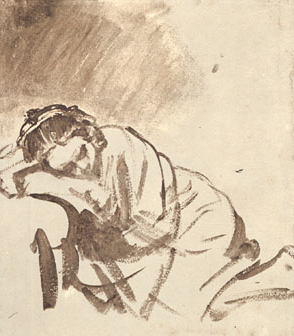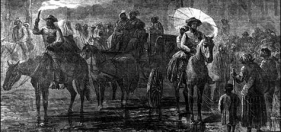
by Bob Martin | Dec 4, 2016 | Art, Exhibits, Galleries
 Bobby Lee Krajnik: Immediately on entering the Olney Gallery you are welcomed and surrounded by a sincere sense of Joy. There are colors everywhere I looked and with the feeling that I had just magically relieved myself of any stress that I accumulated during the course of the day. There was the hum of excitement. It was a good place to be.
Bobby Lee Krajnik: Immediately on entering the Olney Gallery you are welcomed and surrounded by a sincere sense of Joy. There are colors everywhere I looked and with the feeling that I had just magically relieved myself of any stress that I accumulated during the course of the day. There was the hum of excitement. It was a good place to be.
“It is very important to me that my work e positive and uplifting to those who view it. I want to bring a smile to people’s faces, make them chuckle or just feel a little lighter for having viewed my work. If I can make the world a little brighter then my work is done.” Bobby Lee Kranjnik
Bobby’s work will be on view at the Olney Galley, Trinity Cathedral for the rest of December 2016. Perfect spot to lift your spirit afternoon after Christmas shopping. The Olney Gallery is open Tuesday through Friday from 9:00 a.m. – 4:00 p.m. For more information, please call 602-254-7126 Olney Galley, Trinity Episcopal Cathedral 100 West Roosevelt Street Phoenix Arizona 85003
by Bob Martin | Nov 13, 2016 | Art, Concerts, Events, Live Performance
 50 years ago Duke Ellington and his band were invited to perform his concert along with the Trinity Cathedral Choir at the Trinity Cathedral in Phoenix, Arizona. Last night I got to see an extraordinary and delightful performance in celebration of that event, performed by the Phoenix Chorale and the Mesa Community College Performing Arts Center Jazz Ensemble.
50 years ago Duke Ellington and his band were invited to perform his concert along with the Trinity Cathedral Choir at the Trinity Cathedral in Phoenix, Arizona. Last night I got to see an extraordinary and delightful performance in celebration of that event, performed by the Phoenix Chorale and the Mesa Community College Performing Arts Center Jazz Ensemble.
There is one more concert in the Phoenix Area today if you can get tickets, GO! a Lovely way to spend a Sunday. Tickets
by Bob Martin | Oct 31, 2016 | Art
Really make sure you say hello especially if we have never met before.
From the Olney Gallery about this exhibit: The paintings of local favorite Bob Martin and the prints and paintings of emerging artist Louis Giordano combine for a show filled with people and places. Martin has an incredible perception for capturing expressions and creating memorable visions that resonate with the viewer. According to Martin, “An artist has a relatively short period of time to create a bold and provocative interaction with an audience.”
Giordano’s work invites the viewer to contemplate what story is behind his imagery. He states, “I believe that art should do more than simply represent reality.” Giordano has been featured at the Mesa Arts Center, The Eric Fischl Gallery, and Gallery Glendale at Westgate.”

by Bob Martin | Apr 28, 2016 | Drawing
For untrained artists the problem of seeing lies in the inconsistency that exists between the actual visual reality of an object and the way the brain attempts to represent our perception of this reality on the drawing paper. This attempt always involves the tendency to draw our symbolic preconception instead of the actual reality.
Symbolic preconceptions are part of a subconscious visual language that uses symbols to represent known subjects. This language of symbols evolved as a mechanism to help us survive as a species. These symbols help us, for example, to instantly recognize food sources or dangerous predators.
When we view an unknown object our subconscious mind immediately tries to form a new symbol to represent and store the object in memory. Often beginning artists will more accurately draw unknown objects than familiar ones because they are not yet married to the new symbols.
However, when they try to draw the same object a second time, it is likely that a more symbolic image will emerge because ready to use symbols have already been stored in the brain.
Consider, for example, the word “head”. Immediately an image comes to mind which is symbolic for the head. Unfortunately, this symbol is only a schematic representation of a head and is invariably a gross simplification of a real head. Nevertheless, there is a strong subconscious pull to draw the symbol instead of what we actually see.
It is this conflict that artists must try to overcome. This is particularly a problem for pencil portrait artists. When drawing a portrait the artist must resolve numerous layers of symbols to achieve a realistic effect.
We now will describe a very good exercise to learn to avoid the problem of symbol drawing.
We will be drawing from an upside-down photograph. This way our symbolic preconception of the head is disrupted. We will be required to draw without our symbols. The result will be a purer drawing occurrence unfettered by a tainted perception.
As you draw the lines and block in the values you will feel quite awkward in your drawing. This is a good thing. Do not be overly concerned of how your drawing looks. This is an exercise in seeing.
When practicing line and tone this way, beginning artists often get better results than from the right-side up way. Trust yourself and throughout the exercise only look at your photograph in the upside-down position even though it may feel quite uncomfortable.
You will learn to see and draw tone as shapes and will be able to break down hard edges into short, straight lines instead of the usual symbols your brain will give to the nose, the ears, etc.
Thinking of and naming perceived objects will lead you down the garden path of almond shaped eyes, two holes for nostrils, a bunch of lines for hair, cauliflower ears and something that looks like the letter M located on a bowl for a mouth instead of what is actually there.
Artists will never be free of symbolic preconceptions. The symbols actually adapt and become more complicated. It is by constantly analyzing and abstracting form that we are able to draw realistically.
Remi Engels, Ph.D., is a pencil portrait artist and oil painter. He is also the creator of a popular Free Pencil Portrait Drawing Course. Get your free copy here: Free Pencil Portrait Course while supplies last. Also, glimpse some of Remi’s pencil portraits at Remi’s Pencil Portrait Web Site.
For the art of another kind – game art – read these PlayStation 3 pre order tips.
[ad#review-2a]

by Bob Martin | Mar 2, 2016 | Books, Creativity, Education, Photograhy
Today I got the chance to meet Stephen Marc again and to see his incredible book of photo montages and composites “Passage on the Underground“. Talking with Stephen is inspiring, full of lessons and new understanding about the history of the African in America.

OLYMPUS DIGITAL CAMERA
While on his Underground Railroad explorations, Marc’s experiences include:
- Discovering a long-lost false grave that was the exit from an escape tunnel for fleeing slaves. Though the exit had never been found by the local Underground Railroad historians, Marc’s fresh eye led him to what is now believed to be the solution to a 100-year-old mystery.
- Visiting a house long ago owned by a conductor on the Underground Railroad, Marc talked his way in to photograph it during renovations, because he knew the amazing story of two escaped slaves who hid in the rafters, right above the heads of their would-be captors, who searched the house and left without finding them.
- A connection with a New York community college in Jamestown, home of Catherine Harris, a conductor on the Underground Railroad. When Jamestown Community College attempted to purchase some of Marc’s work that was on display, he volunteered to create a custom piece that reflected the community’s connection to the Underground Railroad…. Passage on the Underground
Stephen shared with us a little about his next project. He is a man on a mission. He is available to speak with young people, especially middle graders, about Slavery, The Underground Railroad and African American History in General. He can be contacted via Arizona State University in Tempe AZ
(Originally posted on 2/6/2010)
***

 Bobby Lee Krajnik: Immediately on entering the Olney Gallery you are welcomed and surrounded by a sincere sense of Joy. There are colors everywhere I looked and with the feeling that I had just magically relieved myself of any stress that I accumulated during the course of the day. There was the hum of excitement. It was a good place to be.
Bobby Lee Krajnik: Immediately on entering the Olney Gallery you are welcomed and surrounded by a sincere sense of Joy. There are colors everywhere I looked and with the feeling that I had just magically relieved myself of any stress that I accumulated during the course of the day. There was the hum of excitement. It was a good place to be. 
 50 years ago Duke Ellington and his band were invited to perform his concert along with the Trinity Cathedral Choir at the Trinity Cathedral in Phoenix, Arizona. Last night I got to see an extraordinary and delightful performance in celebration of that event, performed by the Phoenix Chorale and the Mesa Community College Performing Arts Center Jazz Ensemble.
50 years ago Duke Ellington and his band were invited to perform his concert along with the Trinity Cathedral Choir at the Trinity Cathedral in Phoenix, Arizona. Last night I got to see an extraordinary and delightful performance in celebration of that event, performed by the Phoenix Chorale and the Mesa Community College Performing Arts Center Jazz Ensemble.




